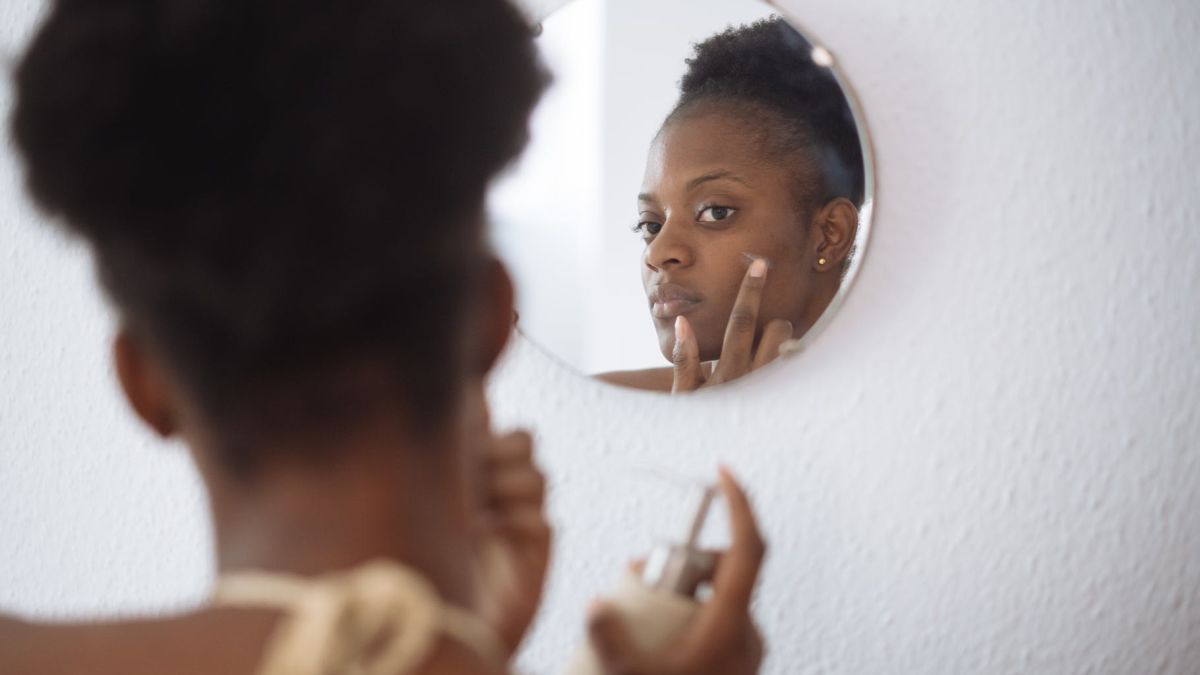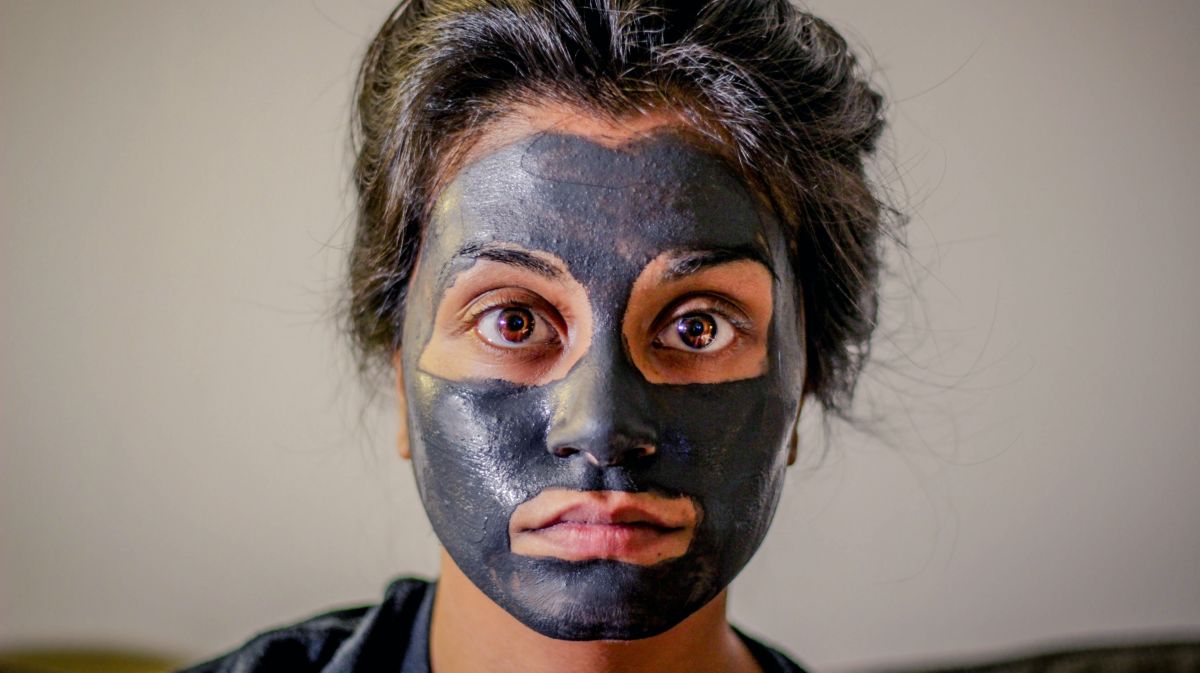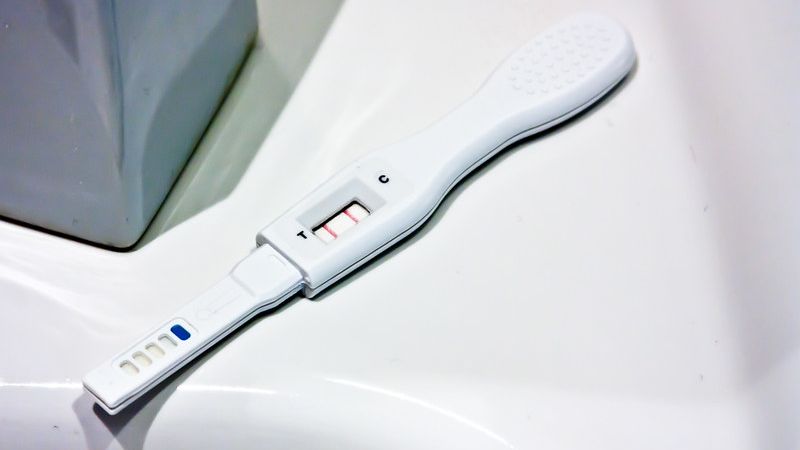Acne

Acne during pregnancy is a significant source of distress and frustration for women, especially regarding the lack of safety data for most acne medications.
However, even though most common medications have not been specifically studied during pregnancy, there is also no data indicating popular topical over-the-counter medications such as azelaic acid or benzoyl peroxide are harmful.
The effectiveness of specific medications on pregnancy-related acne depends on numerous factors and women may achieve varying results.
Note: There are certain medications used to treat acne in the general population that should be completely avoided during pregnancy (oral and topical retinoids), and even months before pregnancy.
Any woman who is pregnant or believes she may be pregnant and is currently using any topical or oral retinoid medication for acne or psoriasis needs to call her HCP, who will likely advise she stop taking the medication immediately. Women should also tell their HCP if they have taken any of these medications within the last two years.
Women should continue reading below for additional, more detailed information.
Background
A substantial number of women suffer from acne during pregnancy, which causes significant anxiety and frustration. Symptoms can range from a completely new pattern of acne to a worsening of acne that previously existed.
Acne during pregnancy is not just an “appearance” complaint; it impacts women’s quality of life, their social lives, work lives, and can increase the risk of depression.
Acne vulgaris is characterized by non-inflammatory and inflammatory lesions (papules, pustules, and nodules) that can cause scarring and enormous psychological distress.
Whitehead: occurs when the opening to the pore is closed off and the hair follicle fills with oil and dead skin cells
Blackhead: occurs when the opening to the pore is blocked by a dark plug of oil and dead skin cells
Papules: raised reddish bumps
Pustules: raised reddish bumps with white centers
Large, deep, solid and painful lumps or cysts under the skin is generally categorized as severe acne
Causes
The mechanisms by which pregnancy alters the course of acne are not well understood.
Although some pregnant women may see improvement or no change in their acne status, a substantial number of women will experience a worsening of acne.
The skin is an endocrine organ that contains many hormone receptors; therefore any increase in hormone production by the body can cause reactions in the skin – which are different across women. It is also currently assessed that immunological changes during pregnancy also play a role in the development of acne during pregnancy.

Acne that is a direct result of pregnancy tends to get better in the postpartum period as hormone levels wane, but it could take the skin several weeks or longer to clear up.
Medication Overview
Acne medications are not routinely studied during pregnancy; most current safety data regarding these medications is based on their mechanism of action, level of absorption, and safety data from non-pregnant individuals and animals. This lack of data can make treating severe acne very difficult.
Current treatment categories are broken down into topical (over-the-counter/prescription) or oral medications (prescription).
Topical medications (directly on the skin) are considered safer than oral medications because the overall absorption of the drug is much less and is considered very low overall. Absorption amount is also affected by how much is applied, total surface area affected, length of application time, frequency of application, whether the affected area has broken skin, thickness of the skin, and medication choice.
OTC – Topical
Common active ingredients in over-the-counter (OTC) topical medications are benzoyl peroxide, salicylic acid, azelaic acid, and glycolic acid.
Note: The U.S. Food and Drug Administration (FDA) no longer uses the old letter category system regarding safety and it has been replaced. This site does not refer to the system, to include their old categories, as the categories were deemed misleading. More information can be read here.
Azelaic acid is effective for the treatment of acne and is considered safe during pregnancy due to its low absorption rate (4%); however, no human data exists. Azelaic acid is commonly recommended as a first-line therapy during pregnancy, along with benzoyl peroxide; azelaic acid can cause side effects such as burning, redness, and irritation.
Benzoyl peroxide is considered safe and effective during pregnancy with an absorption rate estimated at 5%; benzoyl peroxide is available OTC in strengths ranging from 2.5% and 10%. It is converted in the body to benzoic acid, a food additive, and is excreted through urine. Benzoyl peroxide is also commonly used in conjunction with antibiotics in pregnant women with severe acne. Side effects include irritation, dry skin, and the bleaching of fabrics to include clothes, carpet, and towels.

Salicylic acid is available in strengths ranging from 0.5% to 2% and is usually applied 1 to 3 times per day. Although salicylic acid is considered safe with short term use, it is recommended this drug be used on the least amount of skin for the least amount of time possible. This caution is related to studies from aspirin (acetylsalicylic acid) showing bleeding risks that have been extrapolated to include salicylic acid, which is related to aspirin.
It is important to note, however, that low-dose aspirin has not shown the same negative effects of larger doses of aspirin during pregnancy and may actually be beneficial for the prevention of certain outcomes. However, salicylic acid does have a much higher absorption rate in comparison to other OTC topical medications – up to 25% in some cases.
Glycolic acid is an alpha hydroxy acid found in many cosmetics used to treat acne. No human reproductive data exists regarding this ingredient; animal studies have shown reproductive harm, but in doses much higher than those currently in typical cosmetics. However, only a minimum amount is absorbed by the human body, to include glycolic acid peels. Therefore, overall, research indicates that glycolic acid is not expected to cause harm during pregnancy.
Antibiotics – Oral and Topical
Prescription treatment of mild-to-moderate acne typically begins with topical antibiotic medications such as erythromycin or clindamycin which are considered safe during pregnancy (applied 1 to 2 times daily).
Due to increasing bacterial resistance, erythromycin and/or clindamycin may be prescribed and recommended along with benzoyl peroxide.
Erythromycin is assessed to cross the placenta only limitedly, resulting in low concentrations in fetal tissue. However, although long-term use of this medication during pregnancy has not been frequently studied, some research indicates the possibility of liver concerns.
Oral (taken by mouth) erythromycin and clindamycin are commonly prescribed as second-line therapy for patients with mild-to-moderate acne that is not adequately controlled with topical agents alone.
Topical dapsone (Aczone®) was approved by the FDA in 2005 for the treatment of acne in gel concentrations of 5% or 7.5%. Due to its recent introduction to the market, there is very little human safety data and no data regarding its use during pregnancy.
Dapsone should not be used in combination with benzoyl peroxide because this may cause temporary orange-brown discoloration of the skin.
Tetracyclines (which include minocycline, doxycycline, and tetracycline) are commonly used in the general population for the treatment of acne but are not recommended during pregnancy.
Tetracyclines can case fetal malformations as well as deposits that discolor fetal bones and developing teeth; they may also cause liver concerns in pregnant women. However, there is currently very little evidence that these fetal concerns occur with tetracycline use during the first trimester. The exact point in pregnancy where tetracycline begins to cause harm is unknown.
Retinoids – Topical and Oral
Retinoids are a form of Vitamin A that include the active substances acitretin, adapalene, alitretinoin, bexarotene, isotretinoin, tazarotene and tretinoin (vitamin A through food is not toxic). These medications are taken by mouth or applied as creams or gels to treat several conditions affecting the skin, including severe acne and psoriasis. Some retinoids are also used to treat certain forms of cancer.
Oral retinoids are very effective at reducing severe acne by improving all factors that contribute to the cause of acne, and many women of reproductive age take oral retinoids.

Since an estimated 50% of pregnancies may be unplanned, it is vital that women understand the risks associated with these drugs, and stop taking them as soon as they believe they could be pregnant.
Oral retinoids can cause depression and suicidal thoughts in women, as well as birth defects when taken during pregnancy. Therefore, retinoids are absolutely contraindicated (not recommended/complete avoidance) for women who are pregnant or considering pregnancy.
Although not every baby exposed to oral retinoids during prenatal life is born with a birth defect, the risks are very high (estimated at 20% to 60% of all fetuses exposed).
The medication leads to malformations involving the craniofacial area, central nervous system, cardiovascular system, thymus, and parathyroid glands as well as significant neurocognitive development.
Although topical versions of retinoids have not been shown to produce the same detrimental effects as oral retinoids, most HCPs also advise against topical versions of these medications as a cautionary measure. However, sporadic cases of ear, eye, and central nervous system malformations have been reported with topical use.
The oral retinoid isotretinoin (Acutane®, Zenatane®, Absorica®, Claravis®, Amnesteem®, Myorisan®) was approved by the FDA in 1982 for the treatment of severe acne.
In Canada, it is estimated that 3 in 10,000 women between 13 and 45 years are taking the drug, and 3 in 1,000 women in the United States.
The following brand names are also oral or topical retinoid medications:
Tazarotene (Fabior®, Tazorac®, and Avage®)
Tretinoin (Retin-A Micro®, Refissa®, Retin-A Micro Pump®, Tretin-X®, Atralin®, Renova®, Retin-A®, and Avita®)
Adapalene (Differin®)
Several countries have strong pregnancy prevention programs in place to avoid potential exposure to a pregnant woman and her baby.
The United States has an active prevention program called iPLEDGE which began in 2006 through the FDA. This program requires dermatologists to register their patients in the system before prescribing isotretinoin, and the pharmacists to confirm the prescription in the website before dispensing it.
In addition, women of childbearing age who are taking isotretinoin are required to use two different types of contraception before and after one month of drug use and are required to take two consecutive pregnancy tests in a 30-day interval that are both negative.
The European Union also maintains a policy that includes pregnancy tests before, during, and after treatment, the need to use at least one effective method of contraception before and after treatment, and includes a patient reminder card that reminds women of the risks of using the medication while pregnant.
Pregnancy tests and contraception use are critical even after stopping treatment as some retinoids can remain in a woman’s system for up to two years after treatment is stopped.

Laser and Light Therapies
Lasers have been used to safely treat medical conditions in women who are pregnant, but these treatments have not been specifically studied during pregnancy. As such, lasers are considered relatively safe for women who are pregnant. However, women are advised to speak with their obstetrician first before making an appointment with a dermatologist.
Action
Hormonal effects of the skin from pregnancy can be very difficult to manage. However, women can take certain lifestyle actions and precautions to minimize severity.
Women should speak to their HCP if their acne is very bothersome; HCPs can recommend various OTC or even prescription medications. Women should have a risks and benefits discussion with their HCP regarding all types of acne treatment during pregnancy.
Lifestyle modifications include:
Washing the face, back, chest, or other affected areas at least twice a day with a gentle cleanser (no scratching or hard scrubbing). Gentle cleansers are effective, and are less likely to cause side effects such as dryness or irritation (scrubs and astringents should be avoided).
Minimizing the use of makeup, which can further worsen acne; if women use makeup, they should avoid oily cosmetics, and wash products off immediately when they can with a gentle cleanser, using their fingertips (not the nails) to remove foundation and concealer.
Avoidance of touching the face, as well as scratching, picking, squeezing, or breaking blemishes, which could lead to infection or scarring. Women should wash their hands often, however, as it is very difficult to avoid touching the face completely.

Women who experience acne around the hairline should shampoo at least daily to wash off oil and dirt in and around the scalp.
Oil-reducing wipes can be carried in purses to absorb oil when face washing is not possible.
Women should avoid going to bed in makeup or other facial/scalp products whenever possible.
Conditioner can cause acne; women who wish to use conditioner should rub it on their hands first, and try to only use it for hair that lies off the scalp. If women are experiencing chest or back acne, they may want to avoid the use of conditioners, even leave-in products.
Women should also consider sharing and submitting their experience below regarding acne during pregnancy. This can help other women learn additional perspectives and recognize they are not alone regarding this concern.
Resources
Is Any Acne Treatment Safe to use during Pregnancy? (American Academy of Dermatology)
Topical Acne Treatments (MotherToBaby.org)
Skin Conditions During Pregnancy (American College of Obstetricians and Gynecologists)